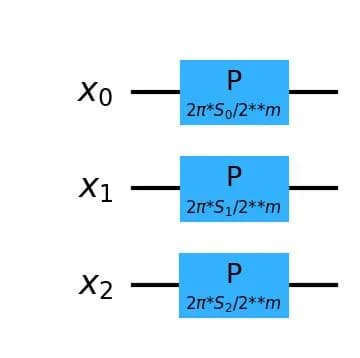Editorial
In this problem, you will implement an oracle that performs the state transition expressed as
Here, the resulting state after the transition can be decomposed independently for each qubit as follows:
Thus, by applying a phase shift gate with a phase of to each qubit , you can solve this problem.
The circuit diagram for the case where is shown as follows.

The circuit depth is .
Sample Code
Below is a sample program:
import math
from qiskit import QuantumCircuit
def solve(n: int, m: int, S: list[int]) -> QuantumCircuit:
qc = QuantumCircuit(n)
for i in range(n):
theta = 2 * math.pi * S[i] / 2**m
qc.p(theta, i)
return qc